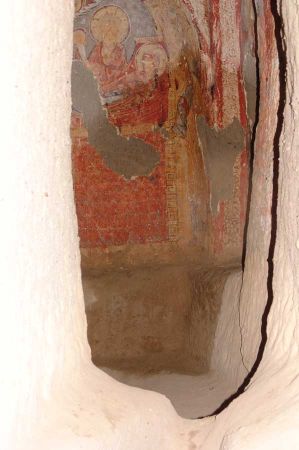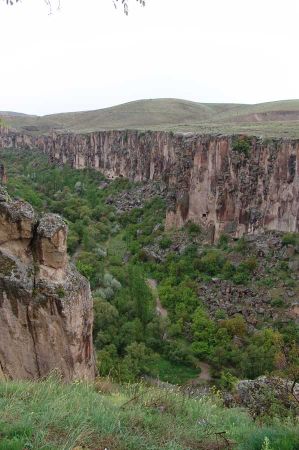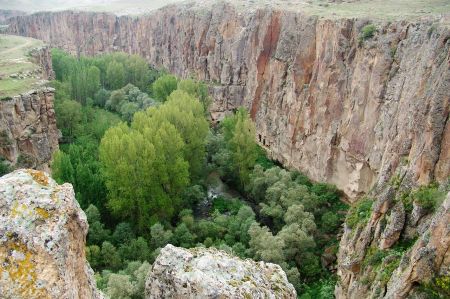Ihlara valley and its Byzantine cave churches
- Written by Portal Editor
Coming from Güzelyurt (Province of Aksaray) we stop at the parking lot of the Ihlara Valley (Ihlara Vadisi), which is known for its numerous rock-cut churches, which is cleverly framed by several restaurants at the entrance area.
Already on the way down into the valley you can hardly avoid the restaurant advertisers, but without the intrusiveness it shows in comparison with the Riviera coast. We don't let ourselves be distracted and start with the descent of the more than 400 steps into the Ihlara valley, which is about 15 kilometers long and up to 150 meters deep, which was dug by the Melendiz River in prehistoric times.

Ihlara Valley - lovely hike along the creek

First you come across caves and churches whose frescoes differ significantly from those in the churches that you come across on the further course of the tour. Churches built around Ihlara mostly show eastern influences from Persia and Syria in the frescoes, which were later often painted over. The background to this overpainting was the so-called Byzantine Pictorial Controversy, which took place in the 8th and 9th centuries to fierce theological debates between the then predominant Orthodox Catholic Church and the Byzantine imperial family. While one party wanted to reduce the belief in icons (iconoclasts - icon destroyers) in the churches, the other group tried to achieve the exact opposite (iconodules - icon worshipers). Why these disputes came about is still controversial to this day. Whether Islamic influence already played a role here, whether it was the influence of the Second Commandment or just the influence of the Byzantine emperor - we will probably never find out.
Ihlara Valley - churches in unexpected positions and seizes
To give just a few examples, we find the “Church under the Tree” (Ağaçaltı Kilisesi) from the 7th century, which was carved into the rock in the shape of a cross and whose dome depicts a scene of the “Ascension”. The type of representation shows pre-iconoclastic representations that have survived the period of the pictorial dispute. We also get to the “Snake Church (Yılanlı Kilise), another cross-domed church, which is painted with scenes of hell in the vestibule (Narthes) and probably dates from the 9th century. The representation of four naked sinners surrounded by snake-like monsters probably provided the name. We then come across the “Hyacinth Church” (Sümbüllü Kilise) from the 10th century, in which clear transitions to the Byzantine style can already be seen. Here you can see the Emperor Constantine next to his wife Helena in the frescoes.
Byzantine Emperor Basil IIdonated one of the churches
St. George's Church from 12th century
On the basis of found inscriptions, the "Church under 40 Roofs", which is also called St. George's Church (in Turkish Kırkdamaltı Kilisi), can be assigned to the years from 1283 to 1295. Until the revival of the church building by the Greeks living here at the beginning of the 19th century, the St-Georgs-Kirche was the last Christian church building in the Ihlara valley. The fresco paintings that can still be clearly seen bear witness to the peaceful coexistence of Muslims and Christians at that time, because next to Saint George, the Byzantine consul Basileos Giagupes can also be seen in Seljuk costume with his wife Thamar, who was also an emir in the region. Inscriptions mention the Seljuk Sultan Musud II and the Byzantine Emperor Andronikes II right next to each other.
With a multitude of impressions we hike back through the valley to the entrance stairs and this time the already waiting entertainer of the restaurant is successful. After these many impressions, it is almost a must to end the day with a view of the Ihlara Valley.
Please read as well:
Güzelyurt - Karballa monastery and Bishop Gregor of Nasianz
-
-
-
-
-
-
-
-
-
-
-
-
https://www.alaturka.info/en/turkey-country/centralanatolia/5496-ihlara-valley-and-its-byzantine-cave-churches/amp#sigProId8219f05ef1
